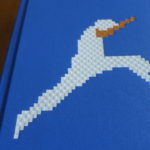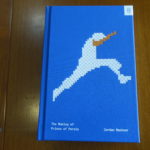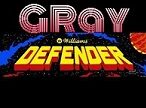The Making of Prince of Persia Book Review
By now, almost everyone has heard of the Prince of Persia video game by Jordan Mechner, a follow up to his first hit game, Karateka. Don’t get on me about the pronunciation, Jordan put out a video specifically saying however you pronounce it, is fine. For those who have not heard of the game, Prince of Persia started out as a video game for the Apple II and would eventually go on to be so popular, it would end up being ported to over 20 different computer systems and consoles and even end up having a motion picture made starring Jake Gyllenhaal. When it was first released back in 1989, it was one of the first games out there that employed realistic full fluid character motion animation using a technique called rotoscoping. Rotoscoping is an animation technique whereby video footage is paused allowing the animator to trace over it, one frame at a time, to produce realistic action. In the first Prince of Persia, Jordan used this technique by filming his brother David with a rented video recorder. The book, “The Making of Prince of Persia”, by Jordan Mechner is a collection of Jordan’s journals which he kept from 1985 through 1993, documenting his “life experience” during the time he was heavily involved with making this game and its ports and follow-ups.
Reading the game’s description from Moby Games website:
While the Sultan of Persia is fighting a war in a foreign country, his Grand Vizier Jaffar orchestrates a coup d’état. His way to the throne lies through the Sultan’s lovely daughter. Jaffar kidnaps her and threatens to kill her if she refuses to marry him. Meanwhile, the man the Princess loves is thrown into the dungeon. He has only one hour to escape from his prison, defeat the guards on his way, and stop Jaffar before the terrible marriage takes place.
This book is also a follow-up to his previous book, “The Making of Karateka”, in which he documents the creation of his first video game. The journal starts out in the early years, 1985 while programming the Apple II version of the game. The book includes photographs in both black and white and full color. In fact, before the journal even starts we catch a glimpse of a young Jordan smiling in front of a tree. Some of the images included within the book are photos from his actual journal and various letters he wrote and received during this time period. They are scaled down a bit, many of which are quite legible. However, some of the shots when reduced are difficult to discern especially the ones in his cursive handwriting and placed in the margins. Jordan introduces his acquaintances from the time and underlined them in blue ink which will often coincide with a brief explanation in the margins of the book.
Reading this book will transport you right into Jordan’s life, almost as if you are there with him working on the game and rooting for it to be a success. I was able to glean a lot of information and random tidbits from the book regarding the game. For example, I already mentioned the rotoscoping technique. There were significant breaks between filming, enough that his brother actually grew a few inches by the time he needed a few more takes.
All the motion in Prince of Persia was filmed in this manner including the scenes with the Princess, who was played by the 18-year-old daughter of a Broderbund employee, Tina Ledeau. The fighting animation sequences were in part inspired by the motion picture Robin Hood, page 85. Some of the actual footage filmed from that time can be viewed on Jordan’s Youtube channel.
Initially, there were no potions, only keys in the game, an idea that was quickly abandoned. The idea for the shadow man came about because they did not have enough memory to reproduce a new fighting sequence with a new character, so they just used one that was already there and shifted the bits to make it look more like a shadowy figure. Impressively even Jordan’s father chipped in, composing the music for the game. (p 134)
Later, as Jordan became less involved with all aspects of the various ports, the Domark Sega Master version of the box cover was released. It turned out to be vulgar & racist, in Jordan’s words from Page 251. To this day Jordan will not sign copies of that boxed version.
Overall, I really enjoyed reading this book. It gave me a lot of insight into both the creation of Prince of Persia as well as what was going on inside Jordan’s head at the time. You learn a lot of details such as his royalty figures from time to time, what he thought about the people at his publisher, Broderbund, ideas that had to be abandoned, and the trials and tribulations of creating a video game. As I turned the pages it was interesting to see Jordan’s increasing success as the game and its follow-ups ended up being ported to so many different platforms.
It certainly brought back a lot of memories. I remember when I first saw Prince of Persia, I was blown away, not only by the motion animation but also by the background story and the play mechanic. It was the PC version, which as I have come to find out from reading this book, was the definitive or best version out there. It had great graphics and sound. I believe I completed it but struggled with the time restriction. I’d be interested to know your thoughts on Prince of Persia and what it meant to you. Speaking of that the last section of the book just following the postscript are several testimonials with photographs from various people lamenting what the game meant to them. Some of which are developers that created their own Prince of Persia related projects.
As for the hardback itself, there is a nice image of the Prince on the Cover which is an imprinted, textured, pixelated look, adding depth, which you can feel as you rub your fingers across the image. It’s sort of hard to describe. The cover is blue and it has a stitched in-seem. It’s a really nice quality book, I wish more publishers would follow suit.
Prince of Persia is a game that has captured the hearts of many generations and even inspired people to make their own versions for various platforms, including this recently released single level ASCII DOS port called mini-prince which was just released the other day.
http://www.indieretronews.com/2020/05/mini-prince-one-whole-level-of-ascii.html
You can read more about Jordan Mechner over on his website at https://jordanmechner.com
There was an interesting tidbit in his BIO on Jordan’s website, where he mentioned the source code to the Apple II version was lost for about 20 years but was found again in 2012, stored on multiple 3.5″ disks.
His youtube channel has tons of related “Making of” videos.
https://www.youtube.com/user/JordanMechner
Of course, you can purchase the Kindle version of the book on Amazon for $7.99 and the hardcover is available for about $15.50
https://www.amazon.com/Making-Prince-Persia-Jordan-Mechner-ebook/dp/B005WUE6Q2
Highly Recommended
Source code:
https://github.com/jmechner/Prince-of-Persia-Apple-II/blob/master/01%20POP%20Source/Source/AUTO.S
https://en.wikipedia.org/wiki/Jordan_Mechner
https://www.mobygames.com/game/apple2/prince-of-persia
https://jordanmechner.com/backstage/journals/
https://en.wikipedia.org/wiki/Prince_of_Persia
https://en.wikipedia.org/wiki/Prince_of_Persia_(1989_video_game)
https://www.c64-wiki.com/wiki/Prince_of_Persia
Youtube Description:
This is my review of the 30th Anniversary Edition of the Making of Prince of Persia Book by Jordan Mechner.
Related links:
https://jordanmechner.com
https://www.mobygames.com/game/apple2/prince-of-persia
https://www.youtube.com/user/JordanMechner
https://www.amazon.com/Making-Prince-Persia-Jordan-Mechner-ebook/dp/B005WUE6Q2
Youtube Original Post Date: 05/16/2020






